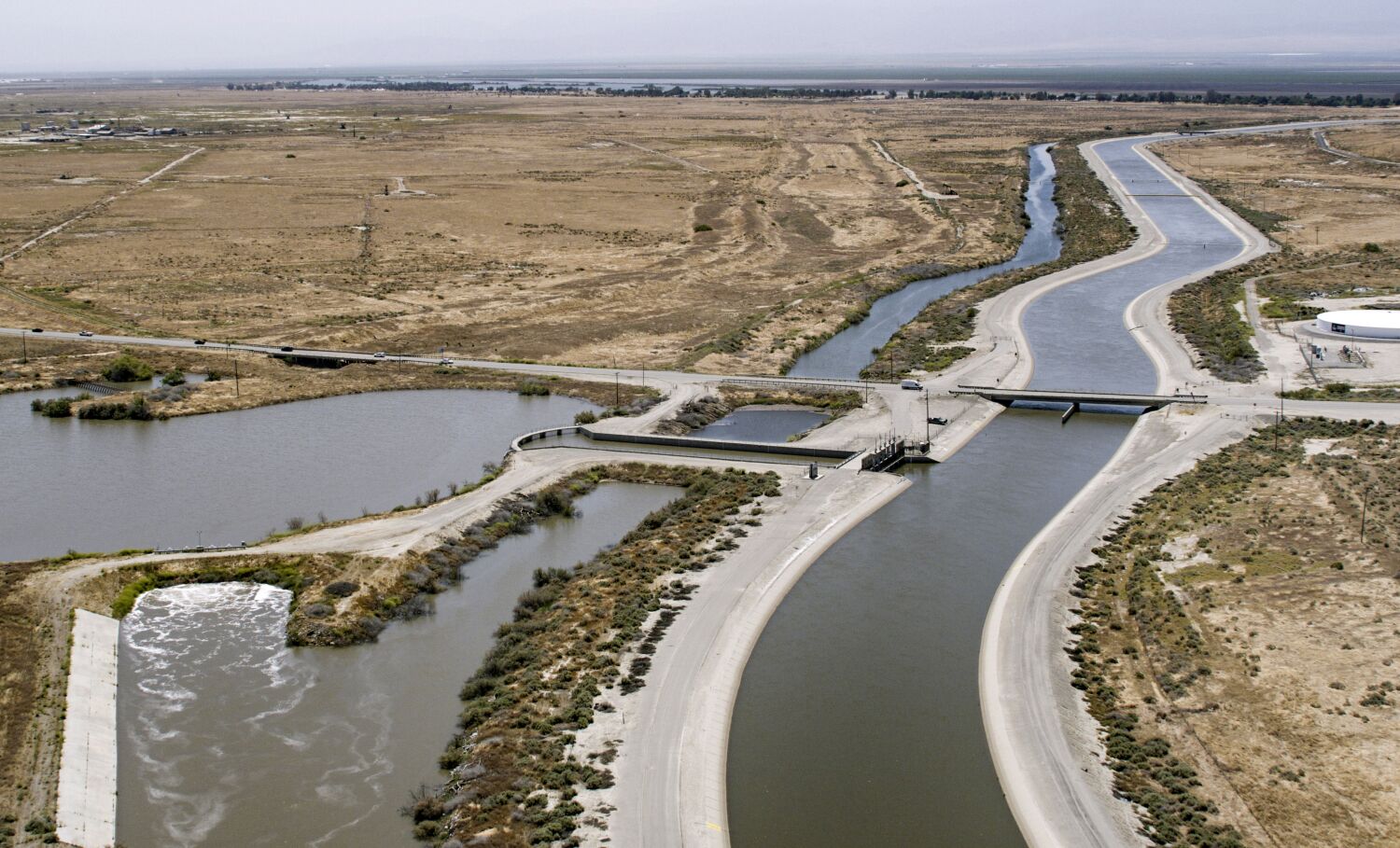Global Courant 2023-05-20 17:00:17
The Kern River has swollen with so much runoff from the epic Sierra Nevada snowpack that state water officials have decided to open a seldom-used relief valve, diverting the floodwaters to the California Aqueduct to be used as drinking water in Southern California.
The opening of this overflow valve, known as the Kern River Intertie, is intended to prevent floodwaters from reaching Lake Tulare, which has resurfaced in recent weeks, supplemented by powerful winter storms and now heavy spring runoff. In the early 1900s, the lake was systematically drained and channeled, allowing farmers to transform this barren stretch of the San Joaquin Valley into a center of industrial agriculture.
Now the return of the phantom lake has swallowed thousands of acres of farmland and is encroaching on low-lying towns like Corcoran.
It is the first time since 2006 that the intertie, which connects the Kern with the aqueduct west of Bakersfield, has been activated. The gates of the 100-meter-long canal were set to open on Saturday to begin taking in floodwaters.
State Department of Water Resources director Karla Nemeth stressed that the move is not in response to an “immediate public safety issue” for residents. The overall goal, she said, is to “do what we can to limit the amount of water that goes into the bottom of the lake.”
“The less water against the Corcoran levee, the better,” she said.
(Paul Duginsky / Los Angeles Times)
The intertie functions as a closed alley connecting two much larger streets. On one side is a stretch of the Kern River, the Buena Vista Channel, and on the other is the California Aqueduct, a simple name for a complex system of tunnels and pipelines that carries water from Northern California and the Sierra to the arid central part of the state. and southern expanses.
To open the connection, operators lower the water level of the aqueduct below the level of the intermediate basin. When the gates separating the two are opened, gravity directs the waters of the Kern River into the aqueduct. The flow is expected to begin at a rate of 500 cubic feet per second and increase to 1,000 cubic feet per second later this month.
In two months, state officials said, about 75,000 acre-feet of Kern River water will flow into the aqueduct, enough to supply about 225,000 homes with water for a year.
The U.S. Army Corps of Engineers built the connection to the aqueduct in 1977 to reduce flood risk to communities around the Tulare Lake Basin by diverting streams when the Kern River is running fast and high. Dam managers have cleared unusually high water flows from Lake Isabella in the southern Sierra, where the Kern is dammed, to make room for the historic melting snow. That, in turn, fueled the Kern, and water managers said they determined that the streams would follow the river channel without interference and flow into Lake Tulare.
“That’s why the intertie was designed, authorized and built, to manage exactly these types of flooding situations,” said Mark Mulkay, the Kern River water master, who asked the state to activate the facility.
Governor Gavin Newsom signed an executive order this week facilitating the water diversions as part of the flood relief effort. Local irrigation districts are already diverting as much water as they can handle to supply crops and fill groundwater replenishment facilities.
“Everything is full. All of our irrigation requirements are met,” Mulkay said. “We’ve been offering water to everyone and we think we’ve done a pretty good job of making sure all the charging ponds are full. So this is basically more water than what can be managed here in Kern County without causing flood damage.
The only place left to safely send the water is via the aqueduct to the cities of Southern California, where the Metropolitan Water District will mix it with other streams from Northern California, treat the water, and send it to the taps will send.
Snowpack in the southern Sierra is over 400% of the average for this time of year, meaning unusually high discharges can persist for months. But Nemeth said the peak snowmelt for the Kern basin will happen “within a week or two.”
In addition to dealing with the massive snowpack, local water officials have struggled to develop plans to counter the chronic overpumping of groundwater that left some residents with dry wells and caused land to sink several feet in parts of the Tulare Lake Basin.
State regulators have declared local groundwater management plans inadequate in six areas of the San Joaquin Valley, including the Kern and Tulare Lake sub-basins.
With more water flowing into the Kern River than the area can handle, the situation underscores the region’s unrealized potential for recharging aquifers, Nemeth said. Local agencies should set up infrastructure that will allow them to keep more of the bounty the next time California gets a wet year, she said.
“Looking to the future, we want to use the interti less and less so that local communities and the groundwater sustainability agencies can absorb those flood streams and recharge their groundwater basins,” Nemeth said. “That’s the future.”








